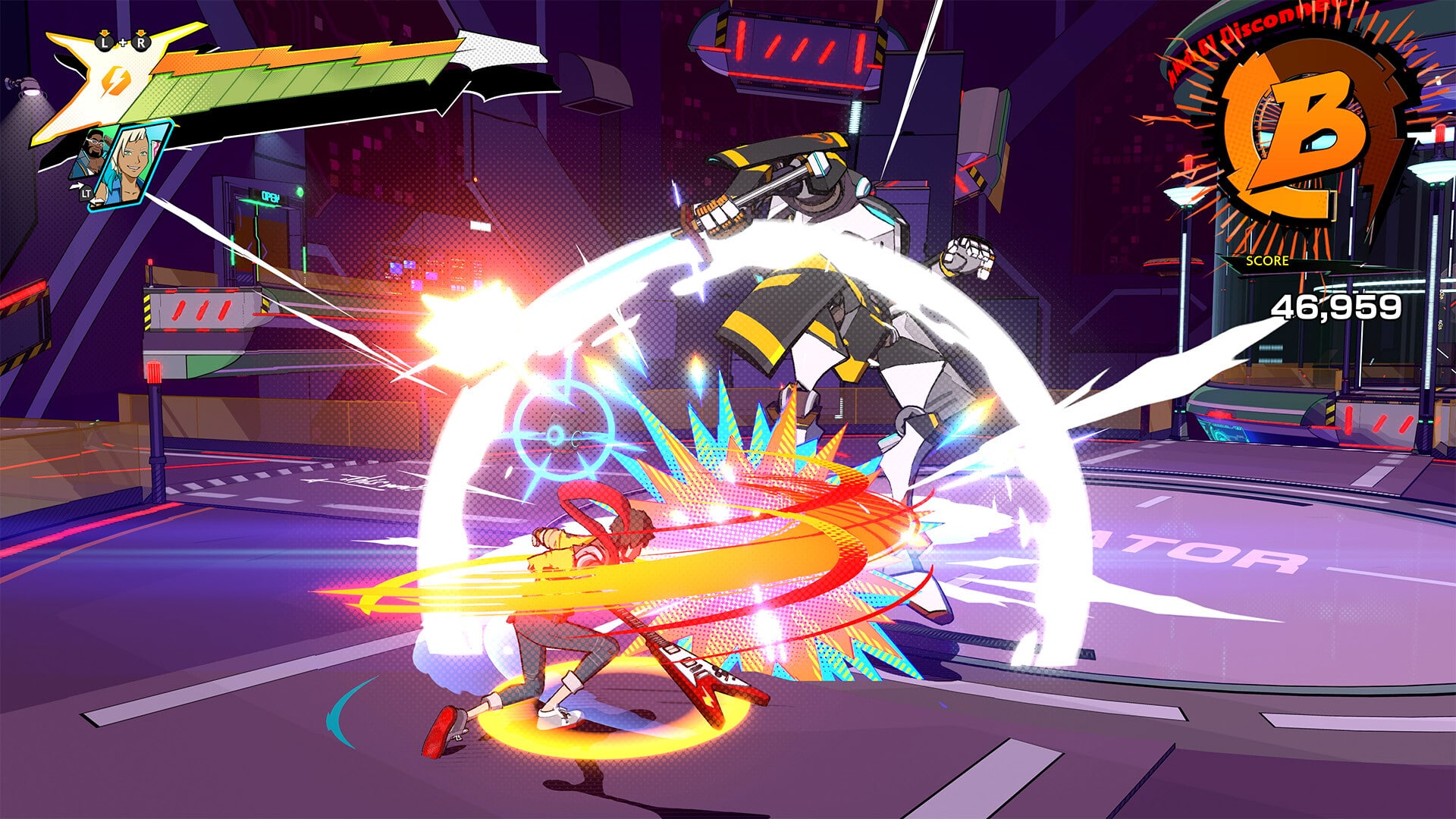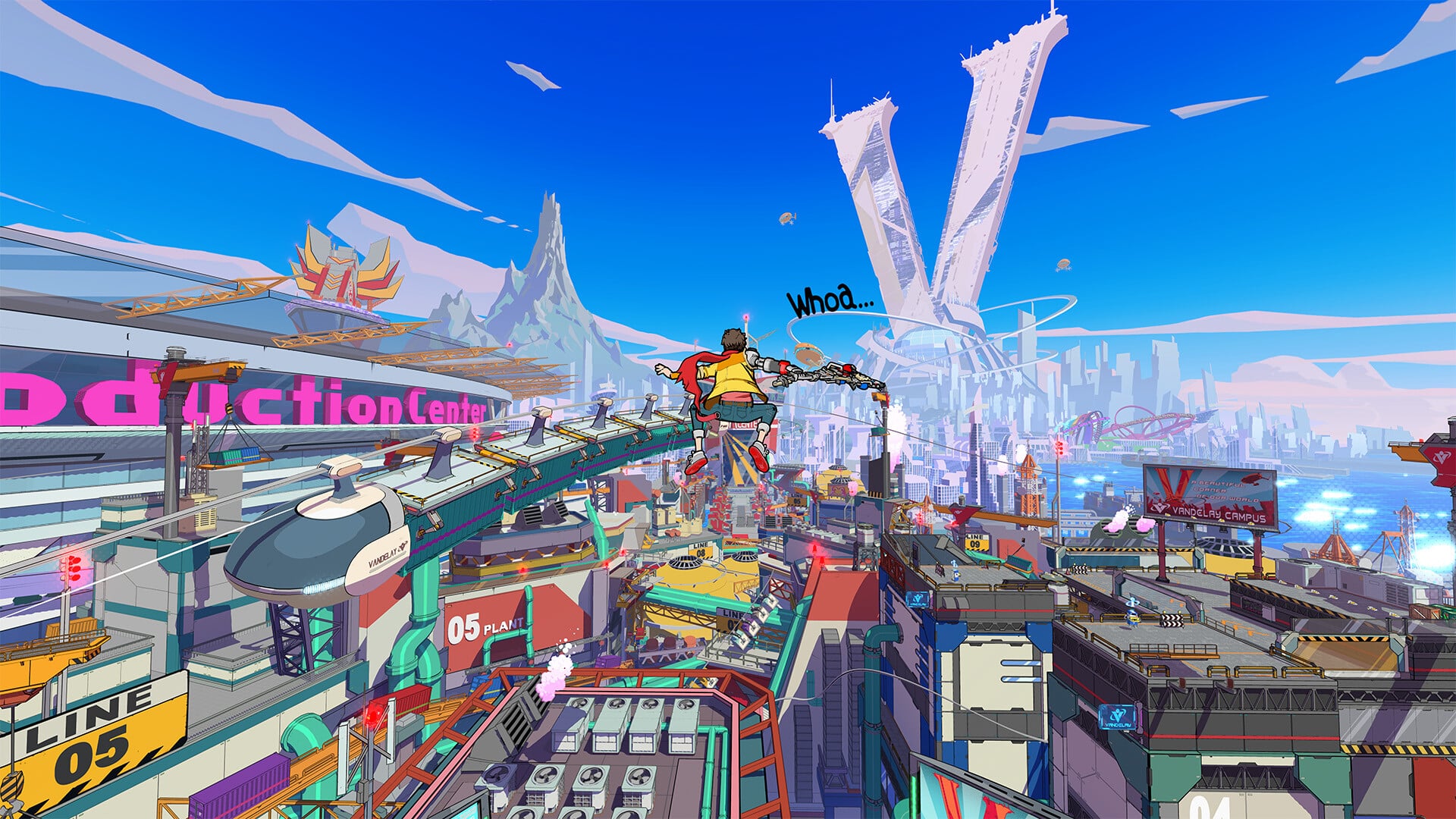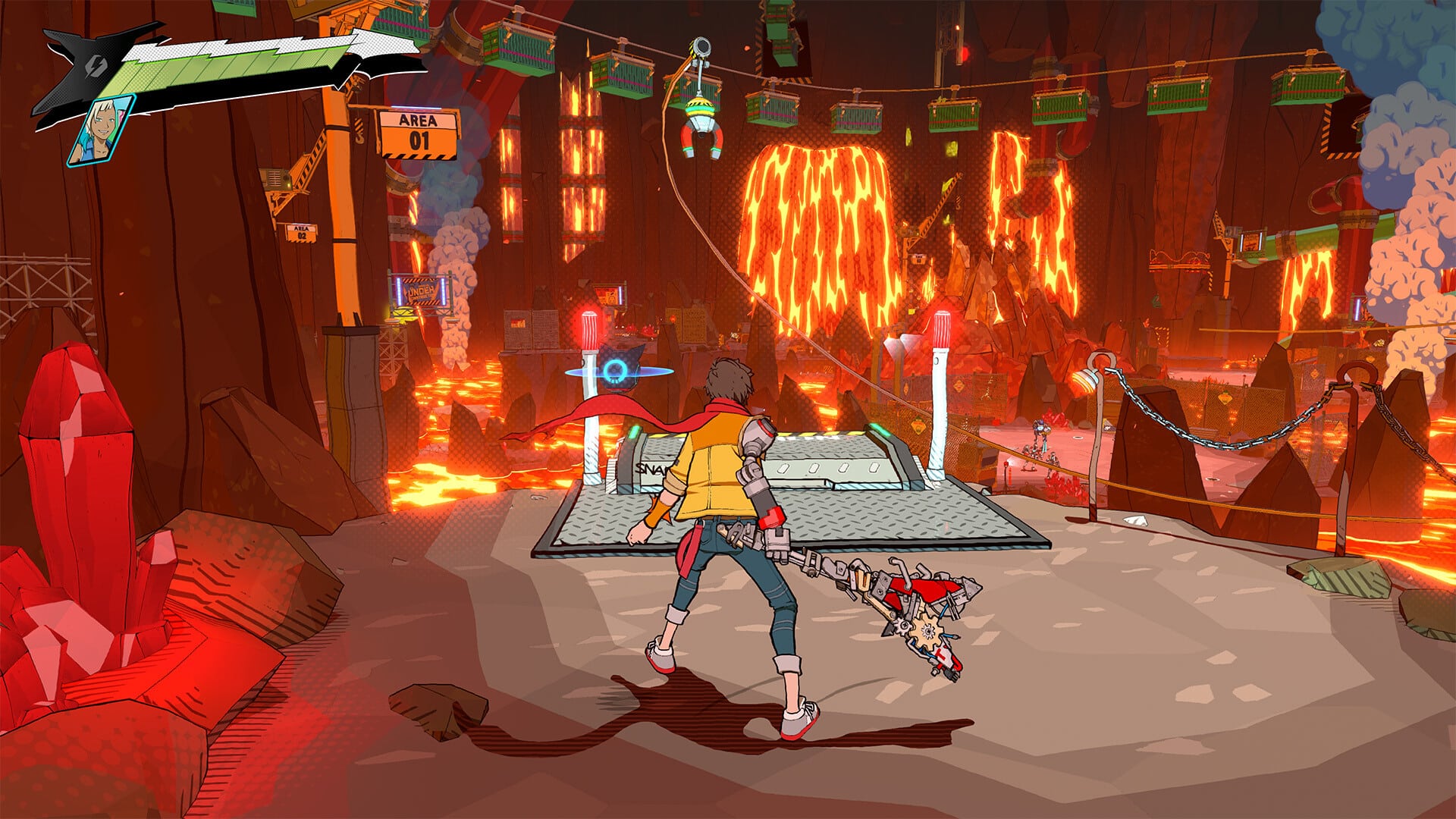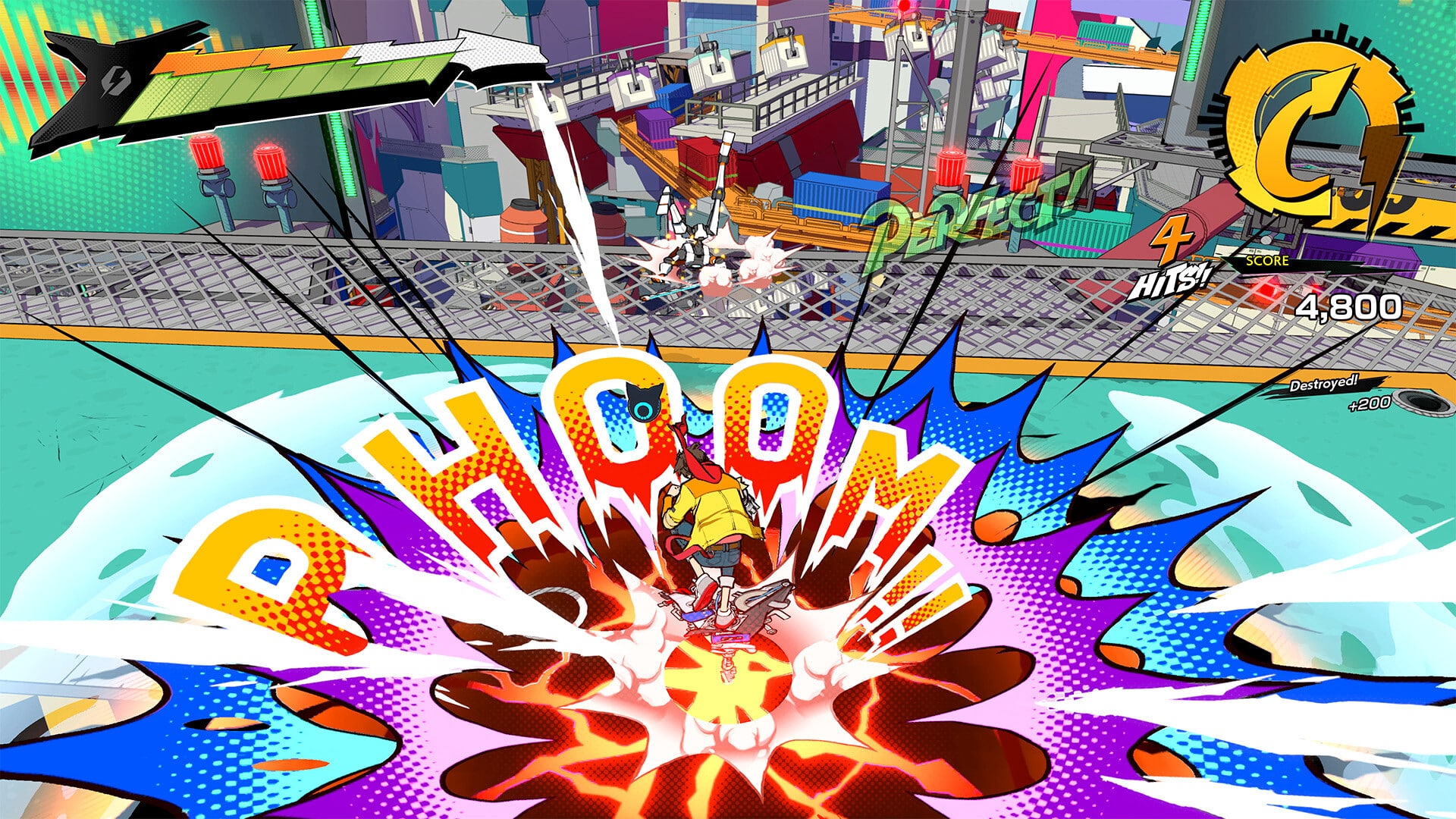We rarely get complete and out-of-nowhere surprise releases in the video game world. The most recent in memory was the big shadow launch was Apex Legends, which had about a week between announcement and launch. Microsoft and Bethesda didn’t even make us wait that long after announcing and releasing Hi-Fi Rush on the same day last week. That and the fact that this colorful, blue skies and happy times style action rhythm game has been in secret development at Tango Gameworks, a studio known for the dark horror franchise The Evil Within, made the announcement even more surprising. If you’re reading this, there’s a good chance you’ve already played the game since it is on Game Pass. But it has made such an impact that we decided to discuss it in this review anyway. Not to get ahead of myself, but it’s a blast.
The Extremely Colorful Keys and Beats
The rhythm genre and the Japanese hack-and-slash variety of action games have both seen better days. While there have been releases in both genres in the past few years, both have become far more niche since their glory days. Anyone above a certain age can remember the absolute cultural dominance that Guitar Hero and Rock Band once commanded. We’ve also seen a few other attempts to mix rhythm with different genres that have achieved varying success. But right from the opening, Hi-Fi Rush sets itself apart.
- Related Reading: Hi-Fi Rush Director Says Game Has Been in Development Since 2017, Pre-Bethesda Buyout
The art design and graphics Tango Gameworks have created is nothing short of fantastic. I have always been a fan of well-done cell-shaded graphics. The cell shading in Hi-Fi Rush is the best I’ve ever seen. I found myself exploring just to prolong getting to look at the environments. It is a shame that a large portion of the levels focus on similar factory settings because the open-air portions stand out with such strength. Even still, I can’t help but give a full-throat shoutout to the designers behind how this game looks because it is phenomenal.
The opening cinematic is a beautifully realized animated sequence that would best be described as Anime-lite. We’re introduced to Chai, a happy go lucky but kind of dumb hipster dancing along to his nondescript MP3 Player. He’s signing up for an experimental procedure to fix his broken arm. The game clearly intends to set a mood immediately and does it well, as it’s some of the best mood setting I’ve ever seen.
Seeing our slacker hero running along a colorful path in perfect timing to The Black Keys while a blue sky and warm sun shine down from above is absolutely infectious. We’re introduced to some of the executives of the Vandelay Corporation, this game’s literal and narrative “Bosses” (the game relies on a healthy dose of meta humor along with the more slapstick physical gags). In the process, Chai’s MP3 Player accidentally gets implanted Iron Man style into the chest piece that is powering and sending commands to his new robotic magnet arm. This is the reasoning behind the game’s rhythm-based combat and puzzle solving, which runs throughout the experience. If you’ve ever wanted a game where you destroy robots using a Cherry Red Flying V guitar made of scrap metal, you’ve found it.
I was surprised at how serious the game took its storytelling. It is a fun, well-paced narrative that is always in the background of what you’re doing. It isn’t going to win any originality awards in the core plot, but it was engaging and genuinely charming. As I previously mentioned, there is a sizable dose of meta-humor that mostly lands, but there were a couple of jokes that made me genuinely roll my eyes. Thankfully,those were far outweighed by genuine chuckles and smiles.
Whirring, Jumping, Bumping, and Bashing
The combat in Hi-Fi Rush is entirely rhythm based. Think Devil May Cry set to a basic 4/4 metronome. Even if you input a command off beat, the game plays a slightly different animation that makes a move take a smidge longer; so every single hit lands on the beat. If you press the button again right when the hit connects, you can stay on time and create combos. If you need a visual sense of timing, they have a couple of ways to make it easier. The biggest assist is the optional timing gauge that can appear on the bottom of the HUD. I found that I never needed it as the environment is bouncing or pulsing with the rhythm; plants bounce, pipes pulse, platforms shift like clocks, and Chai is constantly tapping his foot and snapping his fingers. Once I fall into the groove, the whole thing feels like an extremely satisfying version of Hack and Slash gameplay. The comic book style onomatopoeias emphasizing the last blows of perfectly timed combos and the flashy super moves contribute to this sense of action. I often use the word “kinetic” when I’m describing gameplay that feels impactful and has a good sense of flow to it. When I find myself in a perfect flow while playing this, it is the very definition of kinetic. To give our readers a sense of what it feels like, I would say it isn’t quite like the combat from the Batman Arkham games, but I imagine they initially started with something very much like this system when they developed that.
That isn’t to say that I don’t find some things frustrating. The game repeatedly introduces tutorials for new mechanics for roughly the whole first third. In some ways, it feels like the game didn’t really start until the fourth or fifth level. I also think they may have included too many mechanics to pay attention to during the fights. I was able to adjust and find a way to cheese my way through without constantly cycling through all the different things going on. I would have preferred to be able to attack new mechanics head on instead of finding ways around stuff. Granted, I understand why they decided not to dump everything on you at once so I imagine some people will not have this same problem.
The long platforming and puzzle sections between fights are mostly all good fun, and I enjoyed the world-building done in these portions. Chai’s frequent radio conversations with his friends back at base were well-written, and the constant music was great and never got old or repetitive. I will say that there were a couple of checkpoints that felt annoying. Such as one section where I was struggling with a particular fight, but the checkpoint before the fight was also before the platforming portion right before the fight. It meant that I had to go through the motions of finishing that before I could try again every time I died.
As for the music: I loved every single track. I don’t think there was a single dull piece in the whole game, and considering how important the music is to the gameplay, I was so glad to discover that. While there are a handful of licensed tracks around major events and boss fights, most of the level music is original compositions. As someone who usually likes to play games while listening to a podcast, I wouldn’t dare do that here.
The finale, set to Whirring by The Joy Formidable, had me smiling so broad I felt like I was on morphine. The final boss did not keep up this same energy, though, and I found myself somewhat let down by it, but the final cinematic made up for it, and I was surprised at just how touching I found the dénouement that wraps up the story. Hi-Fi Rush made me care about these characters and their story more than I ever expected to. The music played a huge part in that.
The Imperfect Drug
Tango Gameworks made something special here. I think it is my favorite looking game of all time. And while there were a couple of things that I can critique, the whole package of this product is so compelling that I can’t help but recommend everyone at least try it. I don’t imagine that everybody will get into the combat, and some might find it too difficult given the rhythm mechanics, but you should at least see the opening and play through the initial tutorial. If Microsoft was hoping to make a statement by dropping this game out of nowhere, they did a bang up job. Ironically I’m not a huge fan of the name, but Hi-Fi Rush is a shoo-in for my personal top five titles of the year and it’s still January. You should play it.
Score: 9.5/10
Pros:
- Gorgeous Cell-shaded Graphics and Art Design
- Fun Characters and Story Telling
- Great Music
- Kinetic Satisfying Combat
- The Finale Level
Cons:
- Long Drawn Out Tutorial
- Some Unnecessary Feeling Combat Mechanics
- The Tone Shift for the Final Boss
Game was purchased by the reviewer. You can read MP1st’s review and scoring policy right here.



